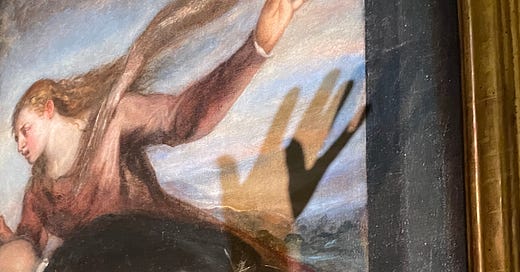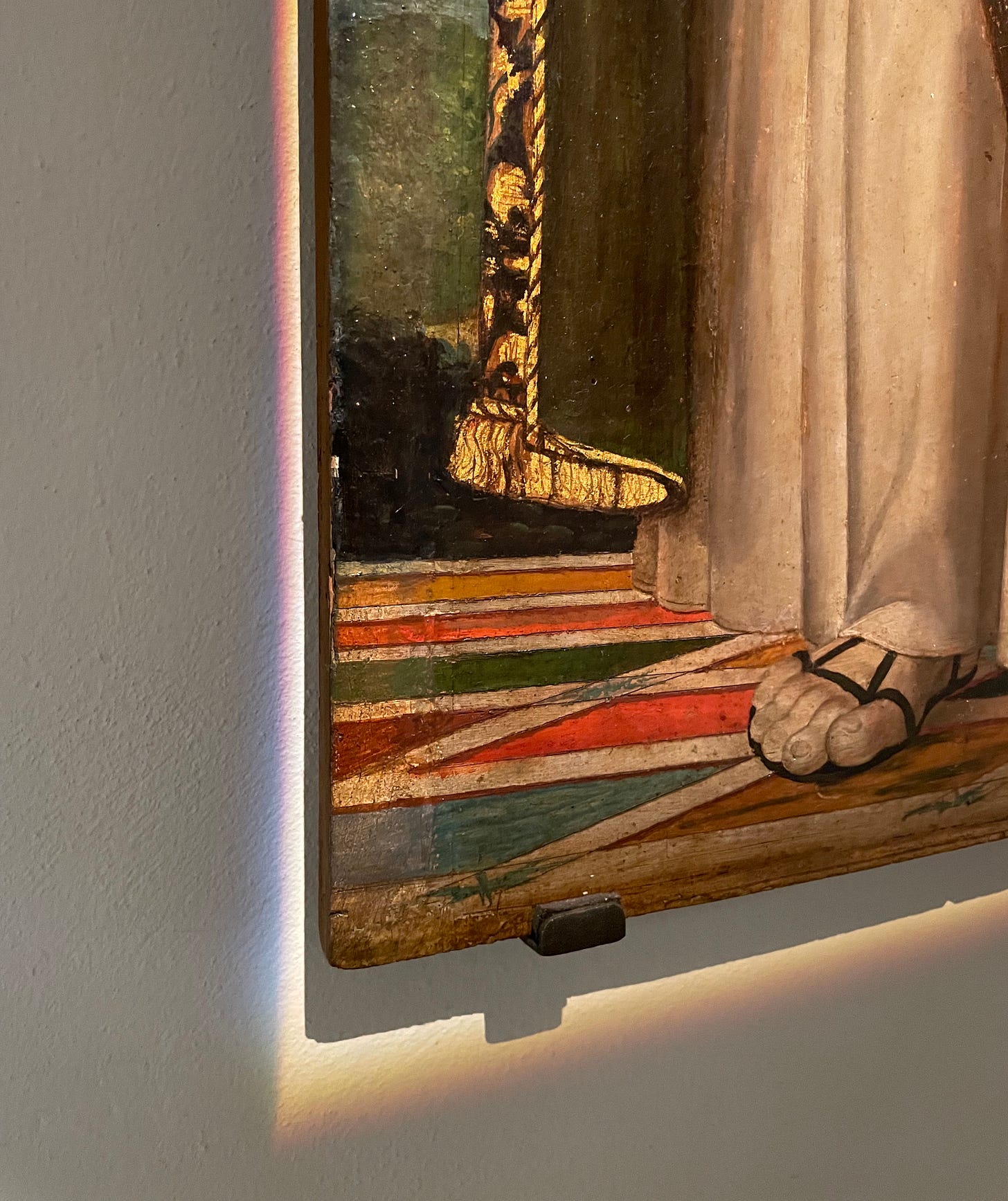Hello friend,
Today’s email looks a little different! I’ve moved my newsletter over to Substack (more on that below) and given it a title - The Museum Gaze. I’m excited about this new home for my writing.
This feels like the perfect moment to introduce the ‘museum gaze’ — and to share what’s fueling my writing about playing with new ways of paying attention.
The idea of the ‘museum gaze’ - to look at life like a work of art - was born in the first summer of the pandemic, a season of exhaustion and fear.
It was a humid July evening, and I had just lugged a bag of my son’s used diapers to the outside garbage can. Just as I was about to turn back inside, I registered the fact that it was sunset.
I stopped and looked up.
A panoramic cloudscape was stretching across the sky - dramatic mountains of puffy clouds in sorbet pinks and oranges. As the sun made its way towards the horizon, the light and colors shifted continuously, cinematically.
And I had almost missed it. In a flash of epiphany, I realized that I would spend more time and care looking at a painting of a sunset in a museum than I was using with the real thing. That disconnection with my lived experience felt so sad.
As I turned to go back inside, I wondered:
How could I pay closer attention to my life?
Looking carefully is a skill I have spent years honing.
My undergraduate art history degree taught me how to look at art. I was trained in visual literacy, learning how to describe what I saw with precision and analyze the contextual currents at play.
Then my Museum Studies education shifted the focus, centering on the human experience of looking at art and making meaning. When I started my Masters at the École du Louvre in Paris, I somehow ended up in a specialization called médiation, even though I wasn’t entirely sure what that word meant. (That is a true story.) Médiation, it turned out, is the rough equivalent of museum interpretation, and it is all about how museums mediate encounters between people and museum objects. I found myself in a program where I got to study how museums shape the visit experience and encourage visitors to make connections with what they see.
And this was an exciting direction for me, because it was this act of looking, not the intellectual engagement with art history, that was fueling the hours I was logging in museums in my personal time.
I loved the feeling of being in front of an object and having an experience — of being struck by beauty, making connections, learning about other peoples’ experiences, being inspired to create. Even after I left Paris to start a PhD program in Montreal, art museums were the temples I visited to process my life, from marriage to mental health to motherhood. They gave me precious space to imagine and digest.
Museums were laboratories and playgrounds, mirrors and monasteries.
But all of that groaned to a halt when the pandemic arrived, shutting down museums and daycares and PhD programs, reducing the perimeter of our family’s daily life to the city blocks we were willing to walk. My world felt small and scary.
Then one evening, that show-off sunset stretched itself across my street, inviting me to rethink how I looked at this life, even here. Even in my pandemic parenting routine. Even in the midst of exhaustion and fear. Even when I had nothing to give.
So I decided to make a game out of using the ‘museum gaze’ in my daily life. I played with new ways of paying attention, looking closely at clouds in the sky, my son’s cheeks, the fruit display at the grocery store. I opened myself to the moment, taking in all its textures and possibilities.
And every time I look out, I am met by something. By color and light and unexpected life. There seems to always be something bubbling below the surface, ready to reveal itself whenever I take the time to look.
My life is being changed by these encounters. I am filled. I am carried. I am surprised by loveliness.
Just last night, my little family was driving home from what our toddler calls the “poutine restaurant”. The clouds kept getting darker blue, matching the color of the distant hills, and then suddenly a gush of golden evening sunlight broke through, illuminating every rustling leaf on the green summer trees. I was floored. What had been an ordinary moment suddenly broke open like the clouds, pulling me passionately into a present that felt fluid and alive. A veil was lifted, a door was opened, and here I was, driving my car and having an encounter with Art.
We find what we look for, and I am finding beauty everywhere.
And this practice of being intentional with our gaze really matters.
We are swimming in an attention economy where a multitude of voices are competing to influence how we think, spend, and interact. Our distraction and misdirection can be monetized. So just as museums are not neutral and should be visited with a critical lens, we must also examine the cultural narratives that tell us how to assess the value of our lives. We must decide if we agree with what is being sold to us as beautiful, meaningful, acceptable, and good. We get to choose how to look.
Reclaiming our attention is an act of power.
I am excited about my newsletter’s move to Substack! Like always, you will continue to receive these emails in your inbox. And now you will also be able to easily access the archives, including my previous seasonal series on:
What we can learn about navigating periods of wilderness from artists who engage with difficult experiences through their art
How parents of little kids can nourish themselves by looking at their lives like art
Another fun feature of Substack is that you can leave comments and we can have conversations about these ideas. I would love to hear your thoughts or questions about the museum gaze.
I’m glad to have you along for the ride.
Warmly,
P.S. The photos were taken in the Pinacoteca Ambrosiana in Milan last month, where I played with light and paintings.











I love reading your thoughts on this. I also found a new appreciation for my immediate surroundings during lockdown periods where we were restricted to a 2km distance. It takes quite a bit of intention to remain attentive and aware as the busyness of life returns
Oh how I loved this! Excited to have you hear on Substack. I love how the theme here is one of presence and attention, something I desperately need to grow in!